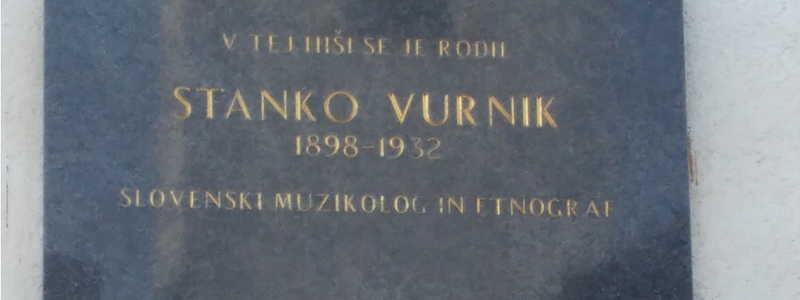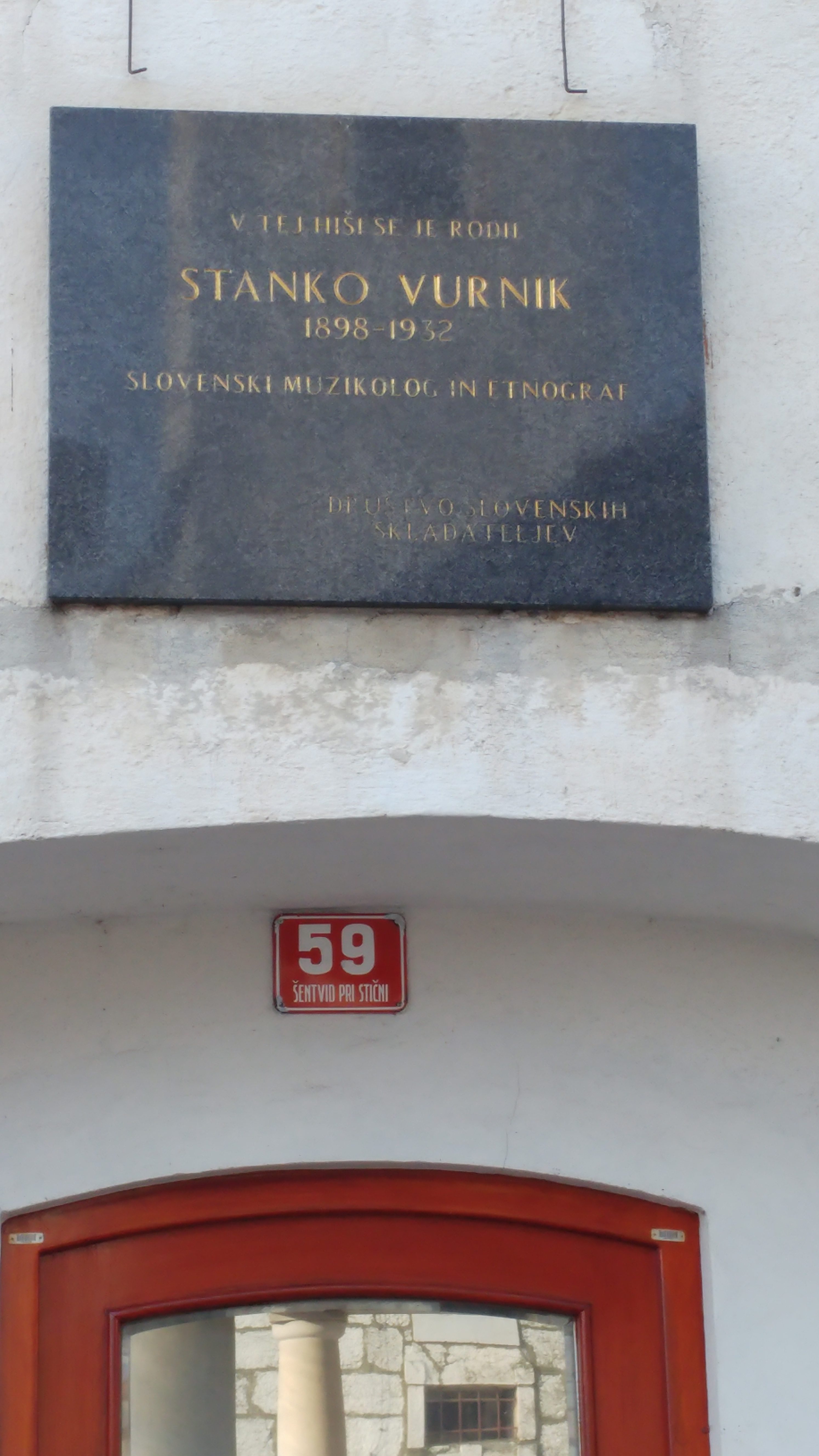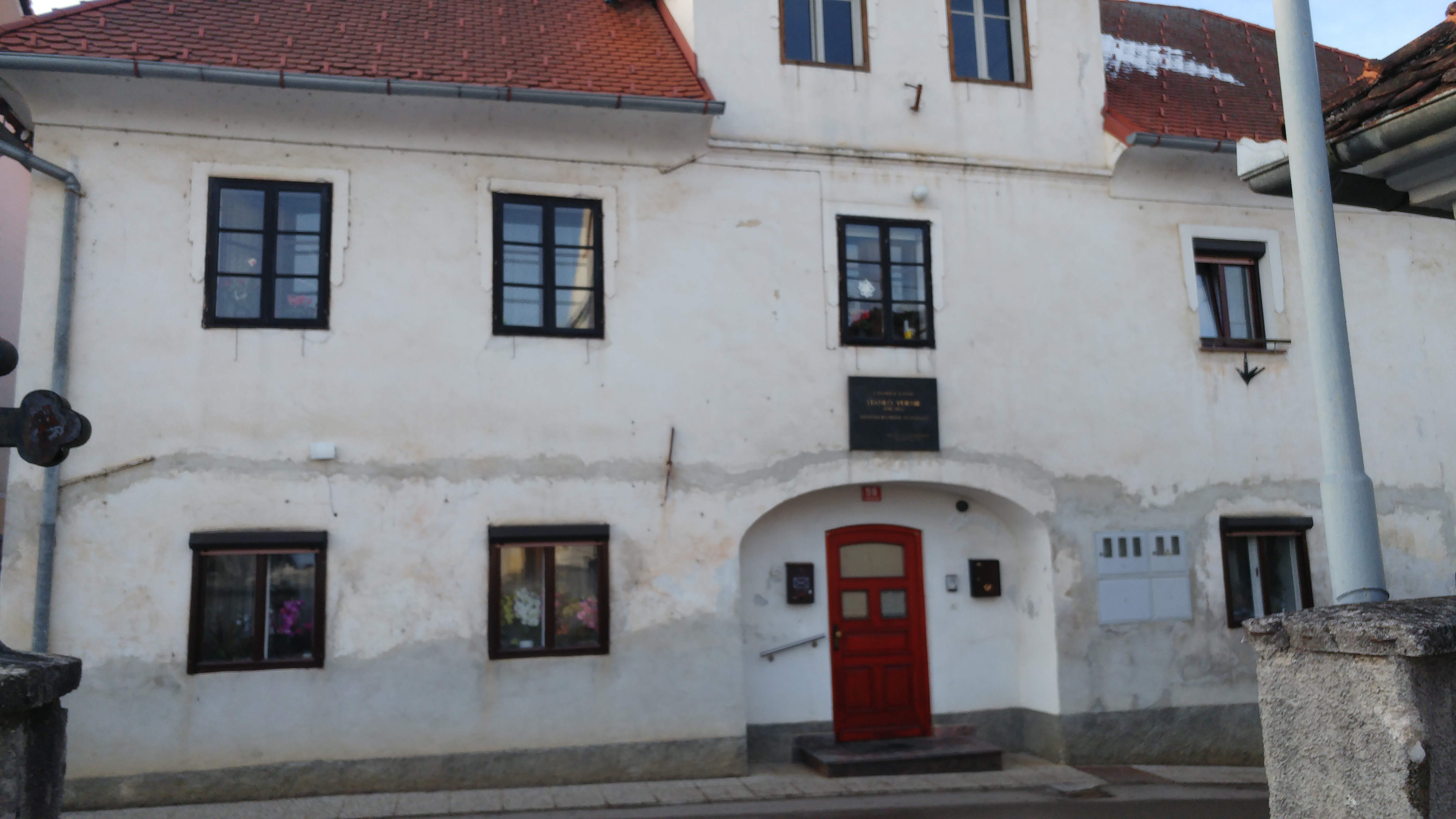A rectangular plaque made from polished tonalite with an inscription was attached to the composer’s birthplace (Sexton’s House) by the Society of Slovenian Composers in 1972.
Stanko Vurnik
Ethnologist and art historian Stanko Vurnik (1898–1932) was also an influential authority on musicology, music criticism and historiography. While studying art history with his role model, Professor Izidor Cankar, Vurnik developed a special affinity for the scientific treatment of style in art. He held the view that the focus on style is the only true method of examining historical issues. He also applied this perspective to musicology, concentrating primarily on researching the history, stylistics and aesthetics of Slovenian music. Despite his lack of formal education in this field, Vurnik was instrumental in building the foundations of the Slovenian scholarly study of music. His main concern was to ensure that musicologists employ solely scientific methods. It was already in 1926 that he voiced the need for the establishment of a musicological chair in Ljubljana. He also influenced Slovenian musical culture by advocating progressive new stylistic tendencies.
Vurnik’s versatility is also evident in the wide breadth of his scholarly interests: from Slavic philology and law to art history. Among the many studies he pursued, he graduated only in art history, from the Faculty of Art in Ljubljana, and obtained his knowledge of ethnology and musicology through practical work. Vurnik began working as an ethnologist as the first assistant and subsequently curator at the Royal Ethnographic Museum, established in 1923, and gained experience in musicology by writing musical reviews and doing research work.
Through his ethnological work at the Royal Ethnographic Museum, Vurnik markedly influenced the research of Slovenian folk cultural heritage, both in terms of subject fields and scientific methods. Among his many concerns was the study of Slovenian folk song; he promoted and laid the foundations for its scientific research. It was thanks to him that a collection of Slovenian folk songs owned by the Glasbena matica Musical Society was entrusted to the Ethnographic Museum. Apart from collecting on-site and recording folk songs, Vurnik also wrote scholarly discourses on Slovenian traditional music and argued that ethnic music was not a uniform whole, but a heterogeneous blend of influences of the naturalistically inclined West and idealistic East. It was with particular commitment that he researched the folklore of White Carniola.
While he first applied himself to music criticism in 1921, Vurnik began to contribute music reviews regularly to the Slovenec (The Slovenian) publication after graduating and obtaining a position at the Ethnographic Museum. In his critical evaluations, Vurnik set higher criteria for art music, promoting above all the performance of new works. He repeatedly drew attention to lack of instrumental performances and advocated reforming music education. Besides modernising the repertoire, his main priority was to educate young composers, who were to model themselves on Marij Kogoj and Slavko Osterc.
A staunch supporter of scientific methods, Vurnik aimed to establish the scientific foundations of music criticism, in line with the principles adopted while studying under Izidor Cankar. Affording a unique perspective on music history, his foremost theoretical work, Uvod v glasbo (Introduction to Music), combines Cankar’s analysis of the development of art history, and philosopher France Veber’s research of aesthetics. Vurnik expressed the views of these two authorities from a musicological perspective and in doing so referred to the work of Guido Adler, a founder of musicology.
Anja Biščak
Maia Juvanc


